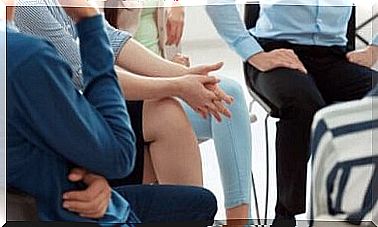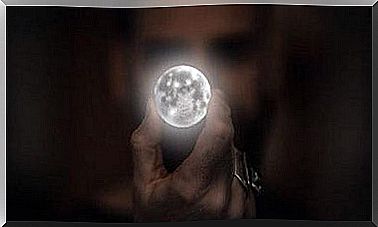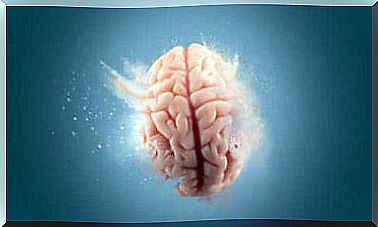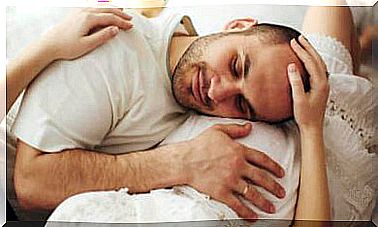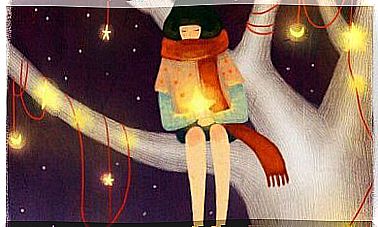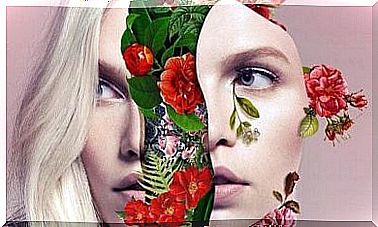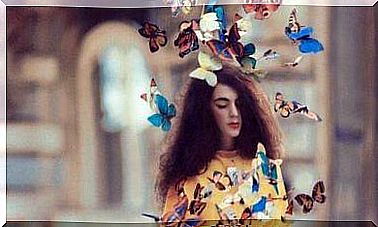Out-of-body Experiences: What Are They?
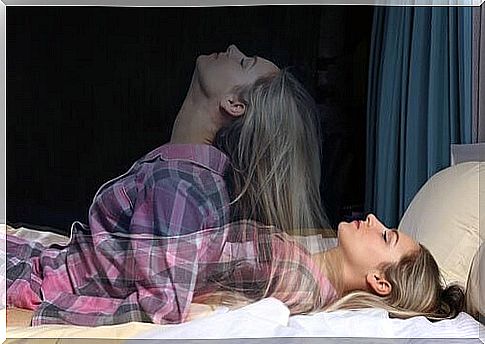
Out-of-body experiences belong to a set of phenomena that are as incredible as they are complex. Imagine seeing your body from the outside or feeling like you are floating. There are two of the sensations that belong to this phenomenon. If for a long time they were labeled as mystical or shamanic experiences, today we know that they originate in our brains.
An out-of-body experience is a perceptual phenomenon. It includes the illusion of movement such as the sensation of flying, falling, floating or seeing one’s body from the outside. These dissociative experiences are linked to neurological and psychological factors present both in healthy subjects and those affected by a pathology.
Types of out-of-body experiences
We can divide the phenomenon into two categories, with well-defined characteristics:
- Sensory experiences. The sensation of falling into the void or floating represents a break in the unity of bodily sensations involving the vestibule-motor system.
- Autoscopic experiences. The subject perceives his own body from an external point of view.

How are they produced?
They are typically associated with altered states of consciousness. Many authors compare this phenomenon to some typical dream states, but with a strong imaginative component. It is also an anomalous phenomenon of multisensory integration, the subject is aware of the situation. The vestibular, motor and sensory systems therefore play an important role.
Systems involved in the phenomenon
- Vestibular. This system includes the receptors found inside the ear; they have the task of maintaining a stable image on the retina, a fundamental function for our balance.
- Motor. During these experiences, although the muscles are not really involved, the brain executes the corresponding programs of movement in a dissociative plane.
- Sensory. Like the motor system, the sensory system is located in the parietal lobe. According to several theories, the self-perceived image of the body is actually projected.
Disorders and phenomena related to out-of-body experiences
When one of the three systems mentioned is in an altered state, we are more likely to have an out-of-body experience. Sleep disturbances, drug use and certain brain injuries can create optimal conditions for these phenomena to occur.
Among the phenomena associated with sleep we remember:
- Hypnagogic and hypnopompic hallucinations. Vivid or confusing perceptual experiences that occur in the initial or final phase of sleep.
- Sleep paralysis. A lack of synchrony between the limbs and the execution is the cause of an altered multisensory processing of the body and, consequently, of self-perception. Under these circumstances, buoyancy sensations or experiences outside the body may be experienced.
- Lucid dreaming. It consists in a recovery of the conscious state during sleep. The subject is able to partially guide the dream which is clearer and more detailed.
- Rapid eye movement. In this phase of sleep phenomena of reverie are produced, since the brain is in a state of intense activity, similar to wakefulness. Thanks to electrophysiological studies, it was discovered that the three phenomena described above occur precisely during this phase of sleep.
Is it possible to induce an out-of-body experience?
For centuries these experiences have been associated with the world of the paranormal. It is not strange, since our ancestors did not have suitable tools for study. Today we know that they are the result of a distortion of the body image of oneself, which involves cognitive processes such as memory, self-perception and imagination.
Out-of-body experiences and fantasy
In addition to physiological explanations, there are also psychological factors. The most important of these is personality.
Several studies have shown that these phenomena are more common in people with a lot of imagination and open to experiences. This means they can be favored by suggestion and personality traits.
Artificial induction
The phenomenon can be artificially induced, which is one of the major proofs of its cerebral origin. The most effective techniques are:
- Induction of brain frequencies. Through binaural tones, it is possible to induce an activity of Theta waves (4-7.5 HZ) in the brain, characteristic of the states between sleep and wakefulness.
- Transcranial magnetic stimulation by stimulation of the temporal lobes, as in Persinger’s experiments. The hyper connectivity generated between the lobes causes an intrusion into the spatial experience of the ego (right hemisphere) and the linguistic experience of the ego (left hemisphere).
- Direct stimulation. In some experiments, these experiences were artificially provoked through direct stimulation of the vestibular and motor cortex.
- Electrical stimulation of the temporoparietal junction. As in Arzy’s experiment, by stimulating this area of intense multisensory processing, errors of self-perception are induced.
- Sensory deprivation. By eliminating the references of space and time, disorientation can cause altered states of consciousness with very realistic images coming from the mind.
Out-of-body experiences and meditation
This phenomenon tends to take place in states where brain activity is similar to that of a dream, but with the preservation of consciousness. It has been found that people who meditate on a regular basis have these experiences, sometimes called “astral travel”, more easily. The Theta waves, in fact, increase in the states of extreme relaxation achieved through meditation.

The role of mirror neurons
Scholars Jalal and Ramachandran hypothesized that the mirror neuron system is so connected that it allows a virtual third-person view. Mirror neurons are activated simply by seeing another person perform an action, connecting with the higher centers to anticipate or mimic it in a symbolic way.
The connection of this type of neurons with the cerebral cortex and the afferent pathways would allow the “separation of the body” in conditions of sensory alteration.
A psychobiological phenomenon
Out-of-body experiences involve the nervous system, motor system, cognitive functions, and personality traits. It is, at the same time, a phenomenon which, while occurring naturally under certain conditions, can also be pathological.
Artificially provoking them is not necessarily healthy; on the contrary, it is not without dangers since it is also linked to psychotic crises.
Since this is a phenomenon associated with the paranormal, for a long time it was common to refuse a specialist visit, for fear of being labeled as crazy. Understanding the true causes of the phenomenon is, however, the first step to be able to treat them correctly.
